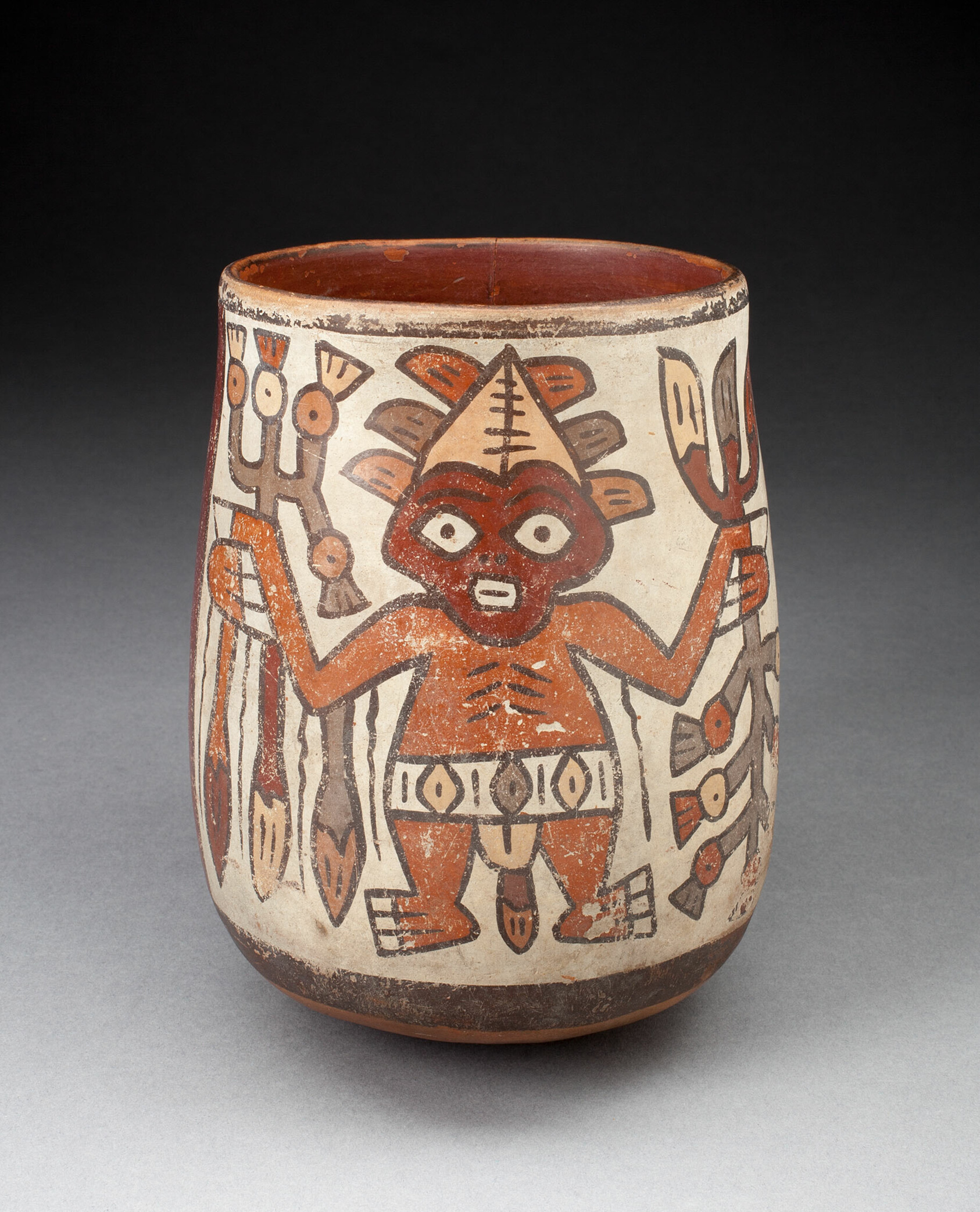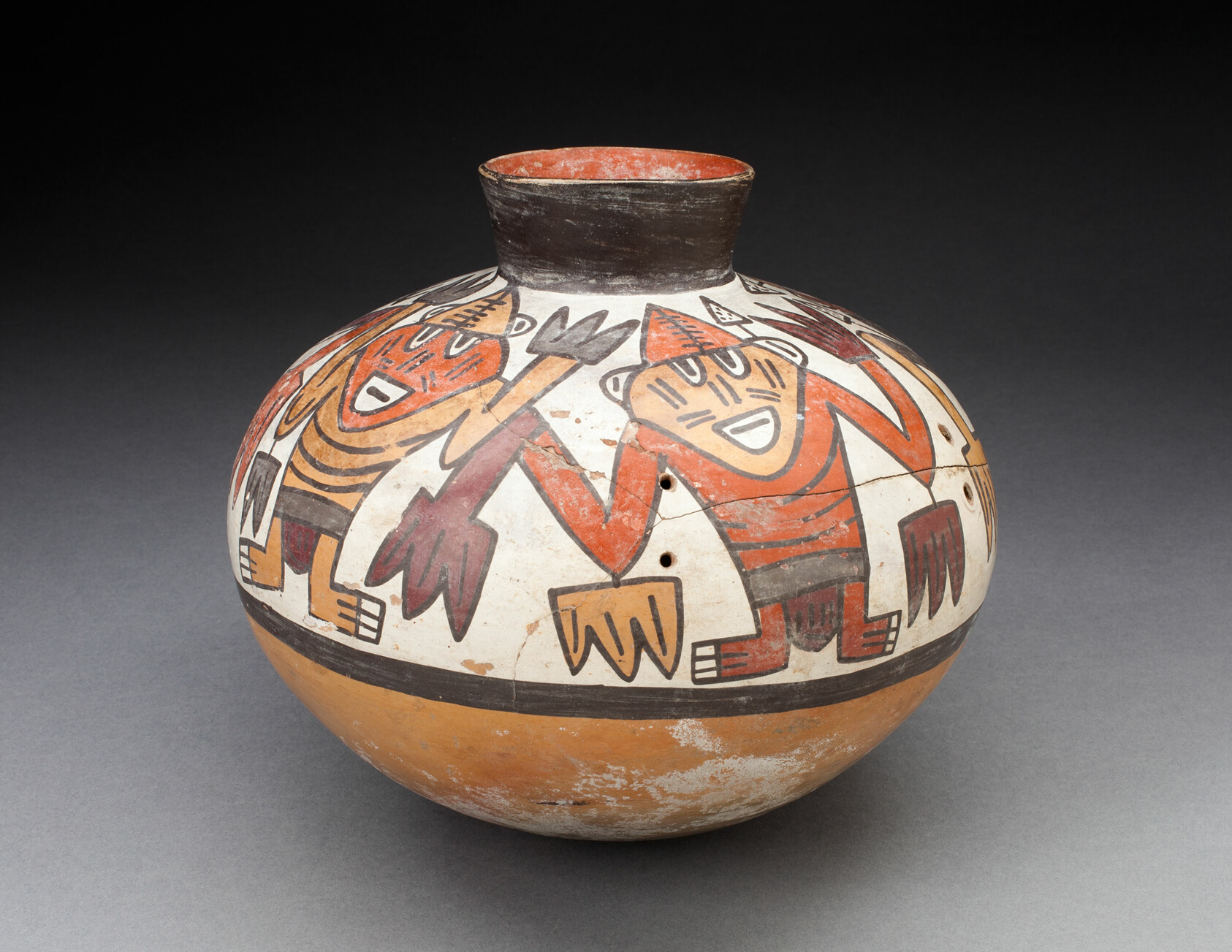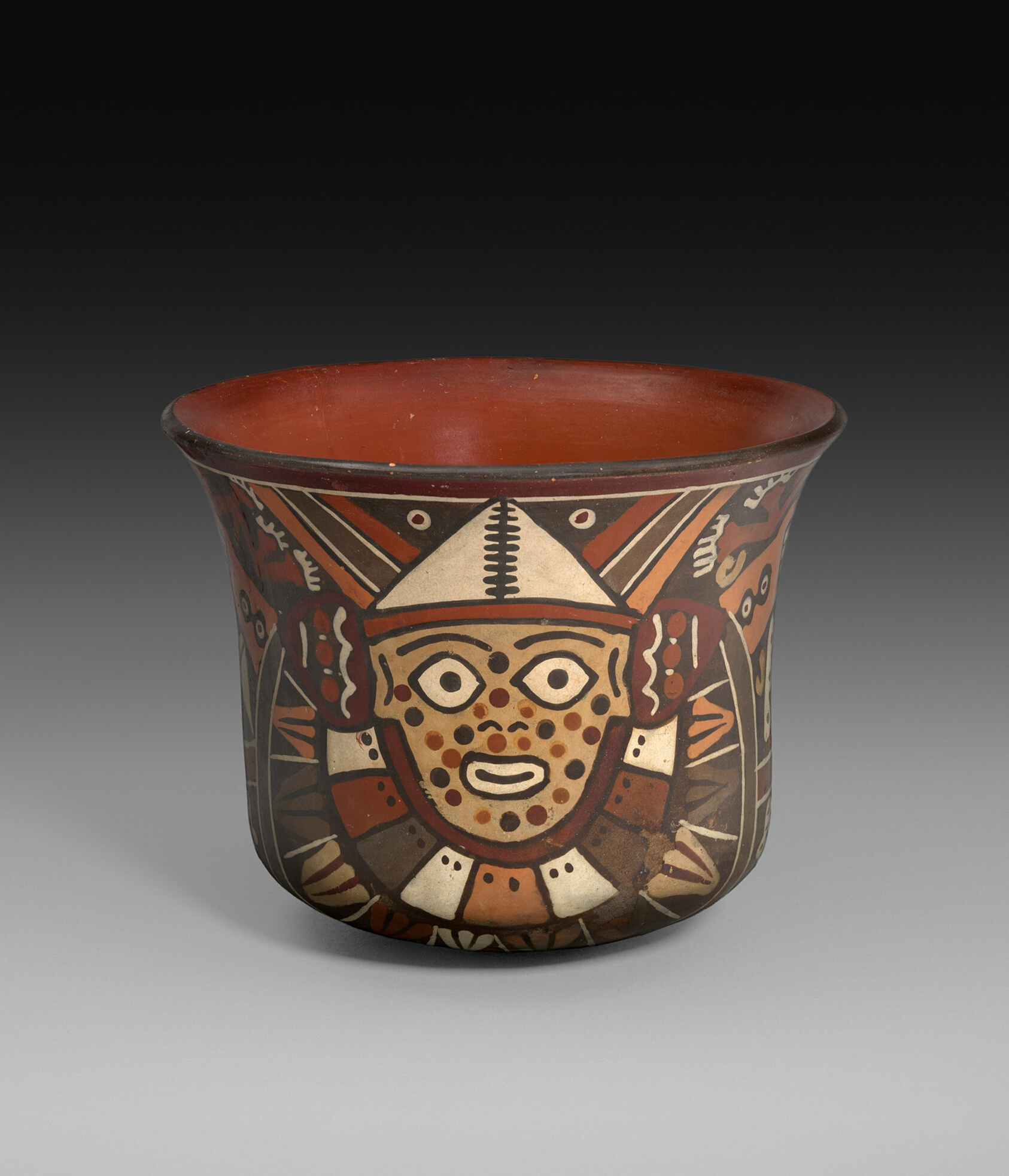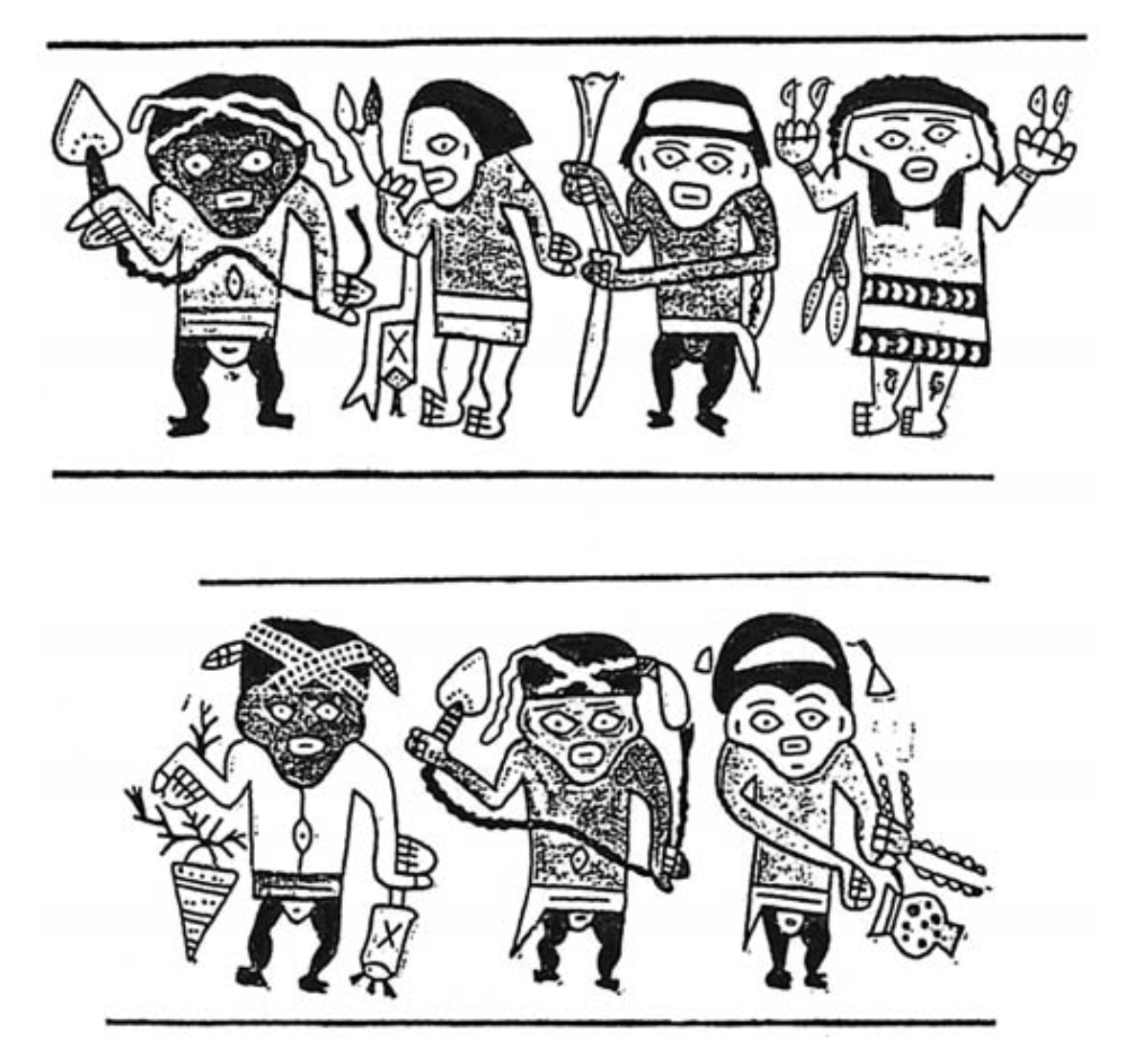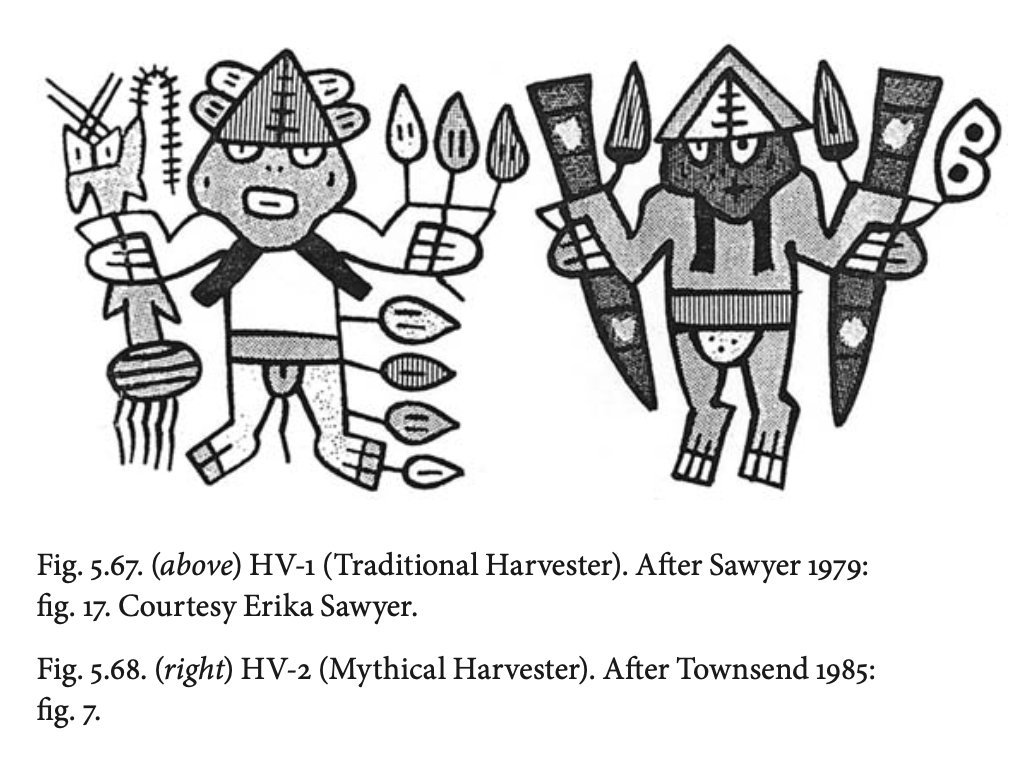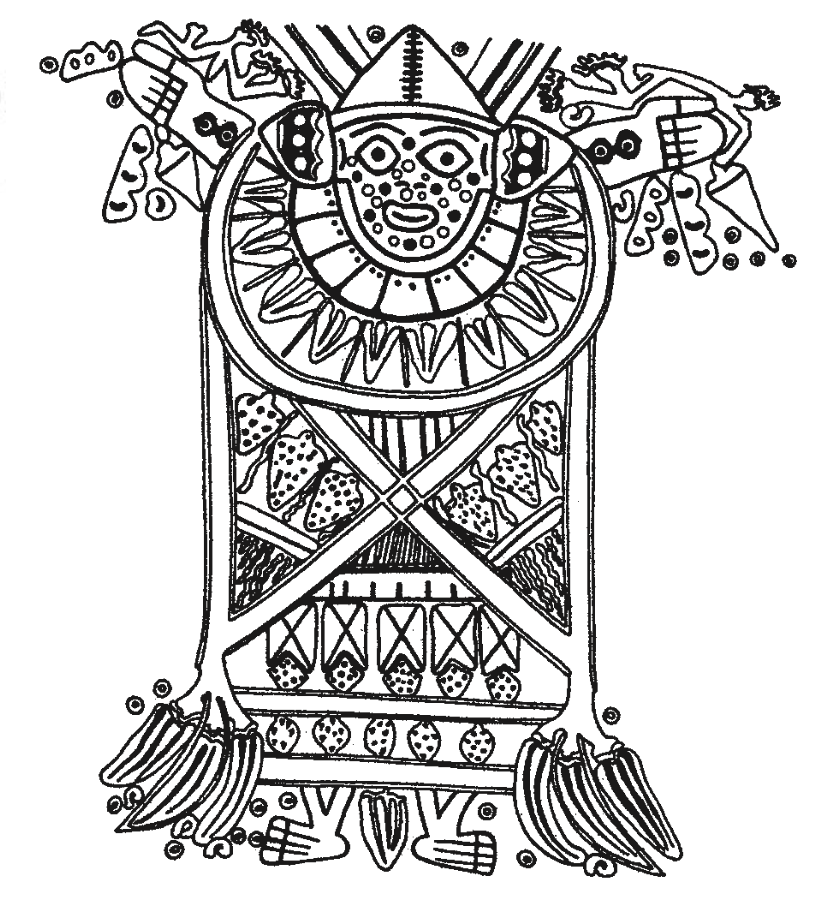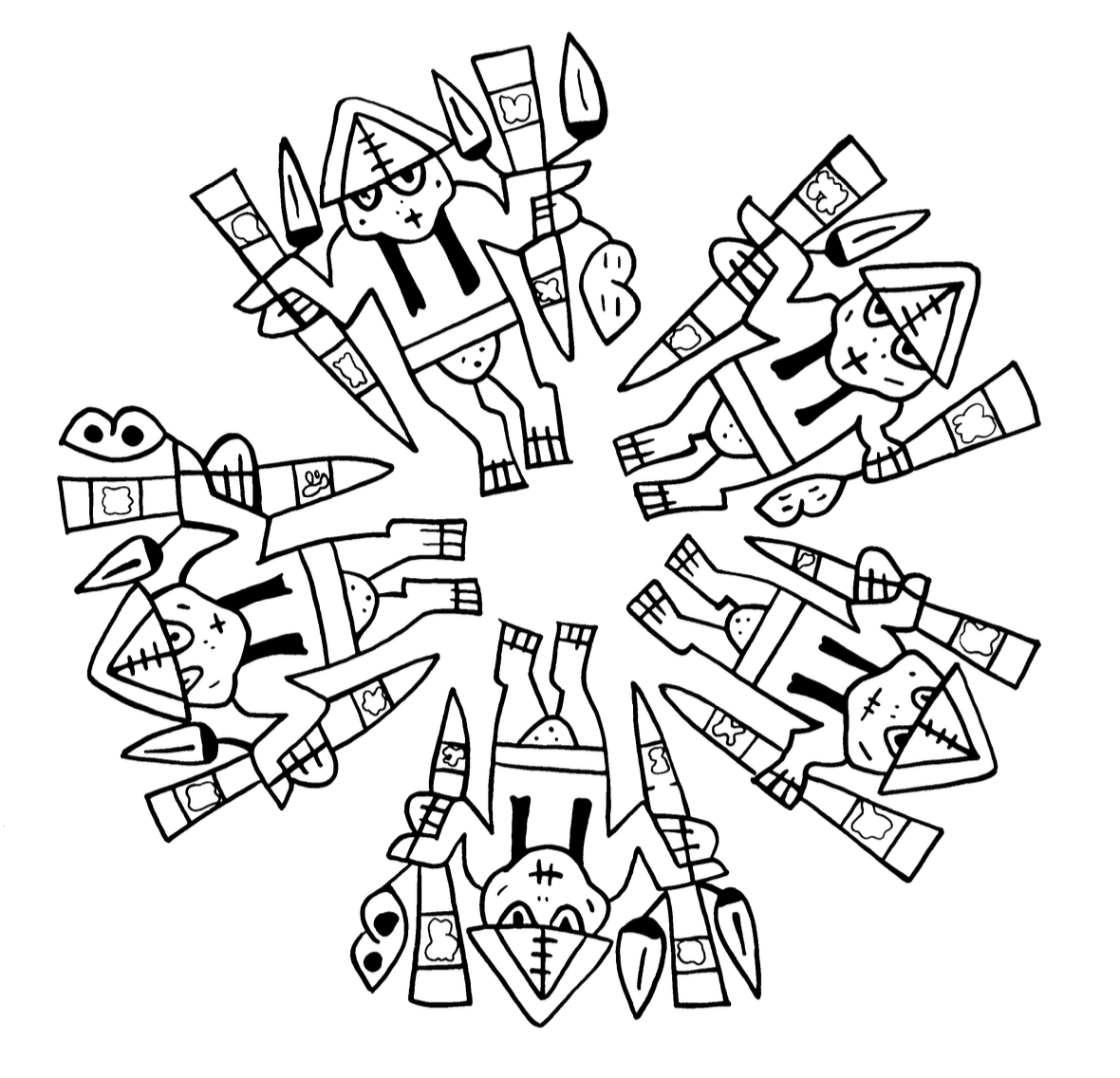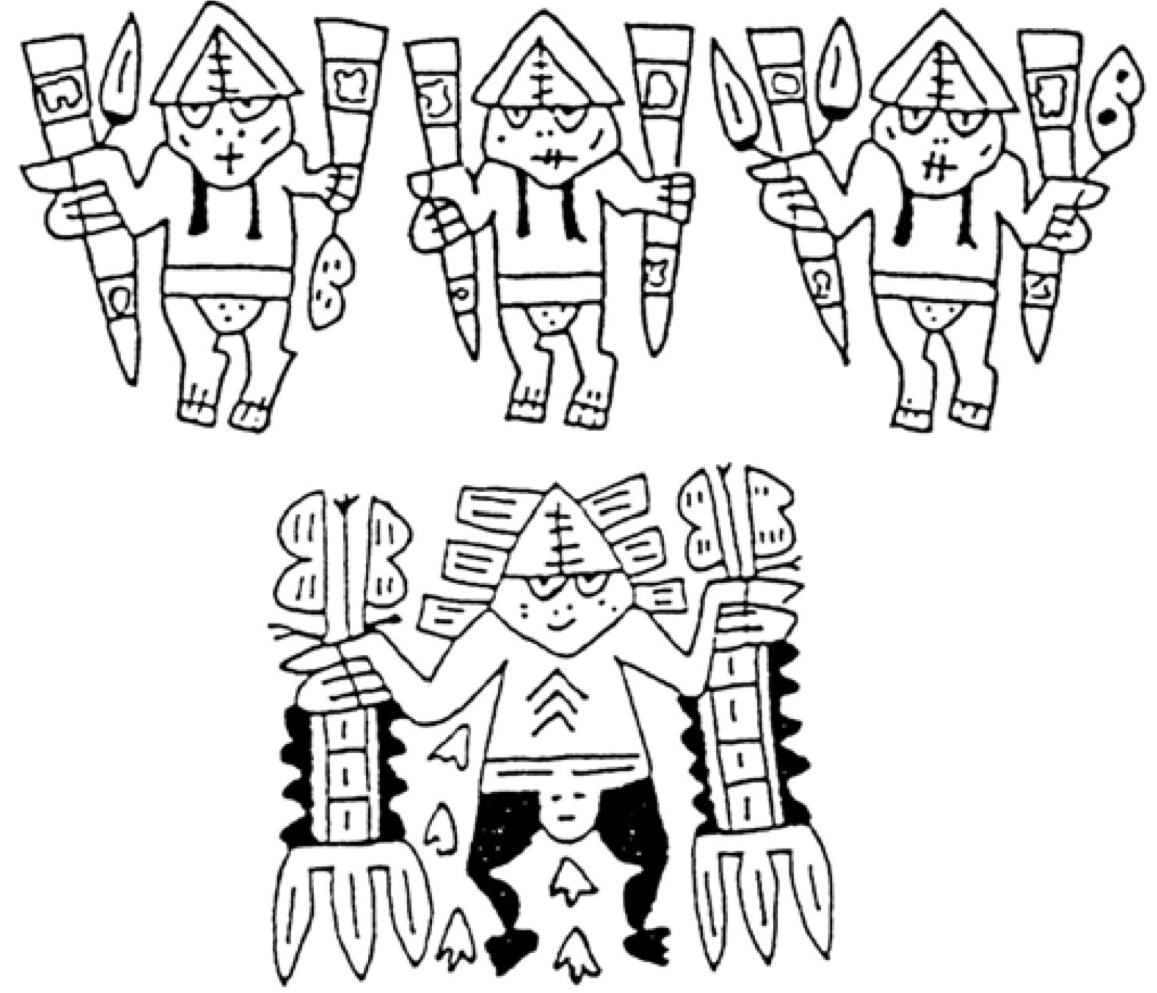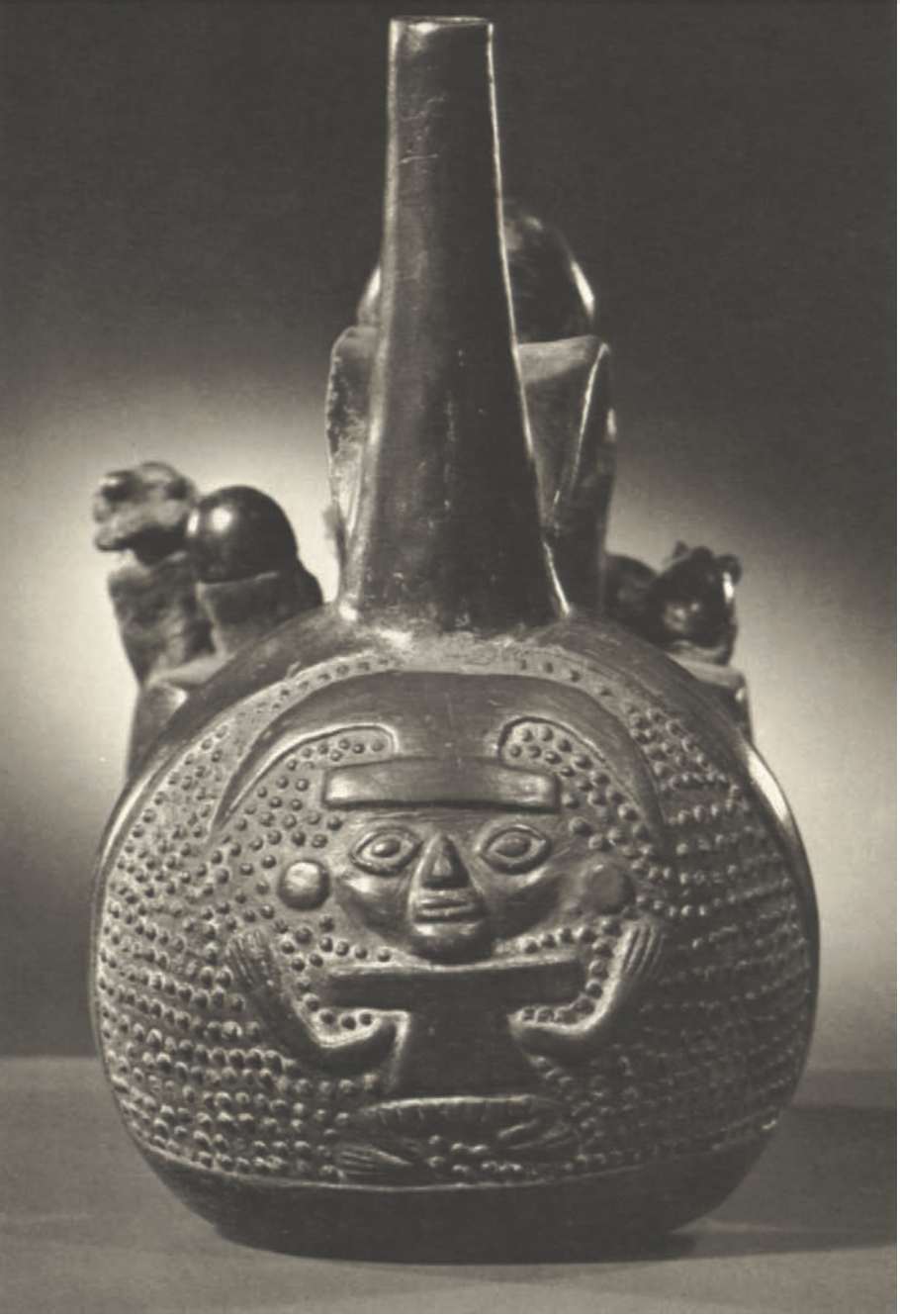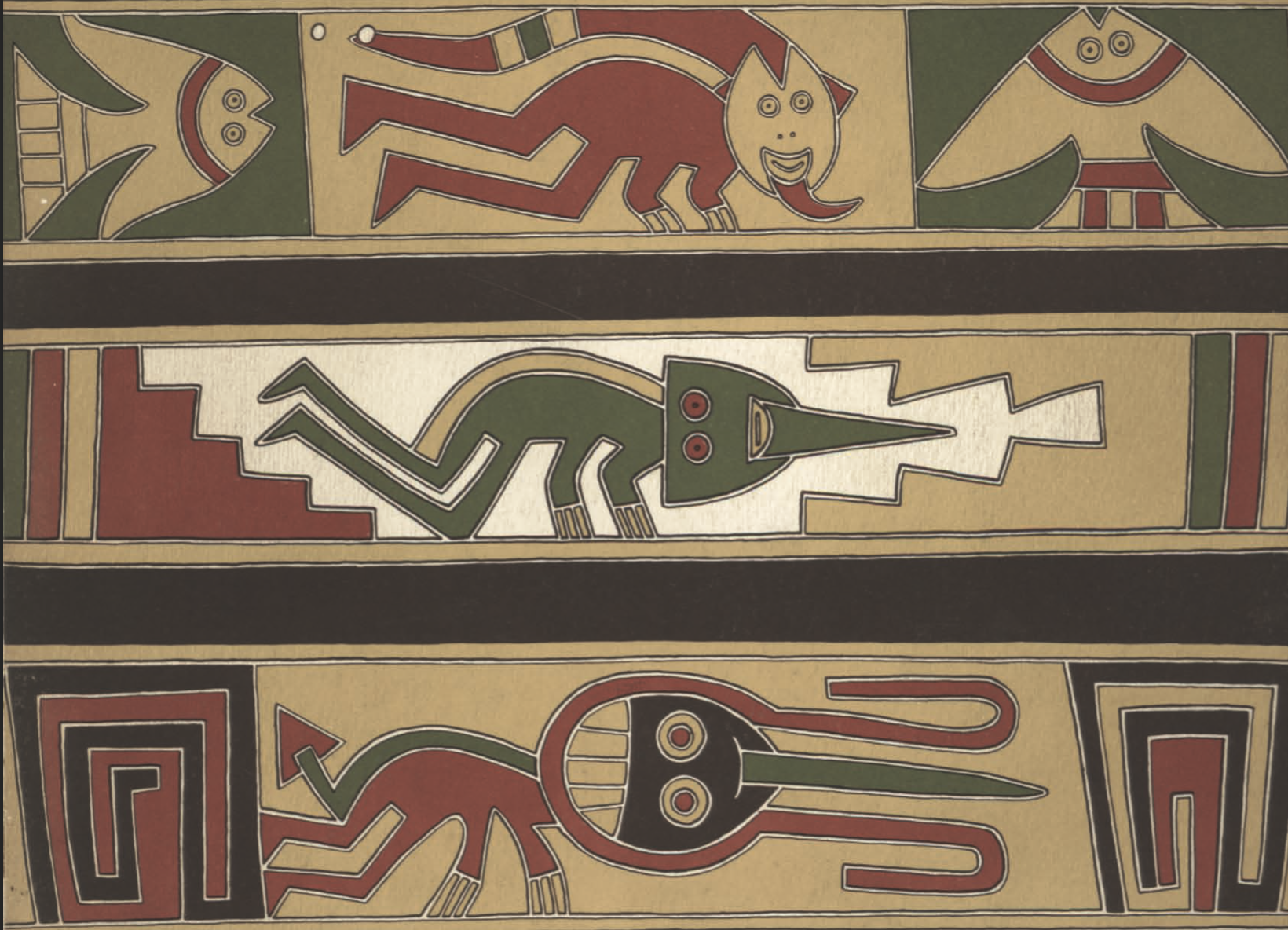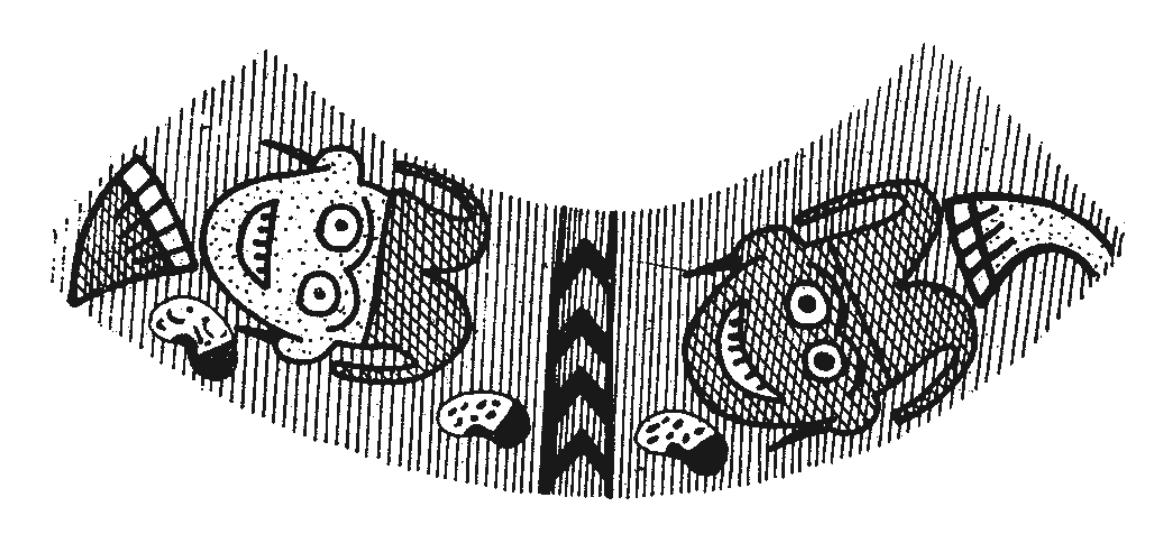The Vegetation Demons of Nazca
February 8, 2024
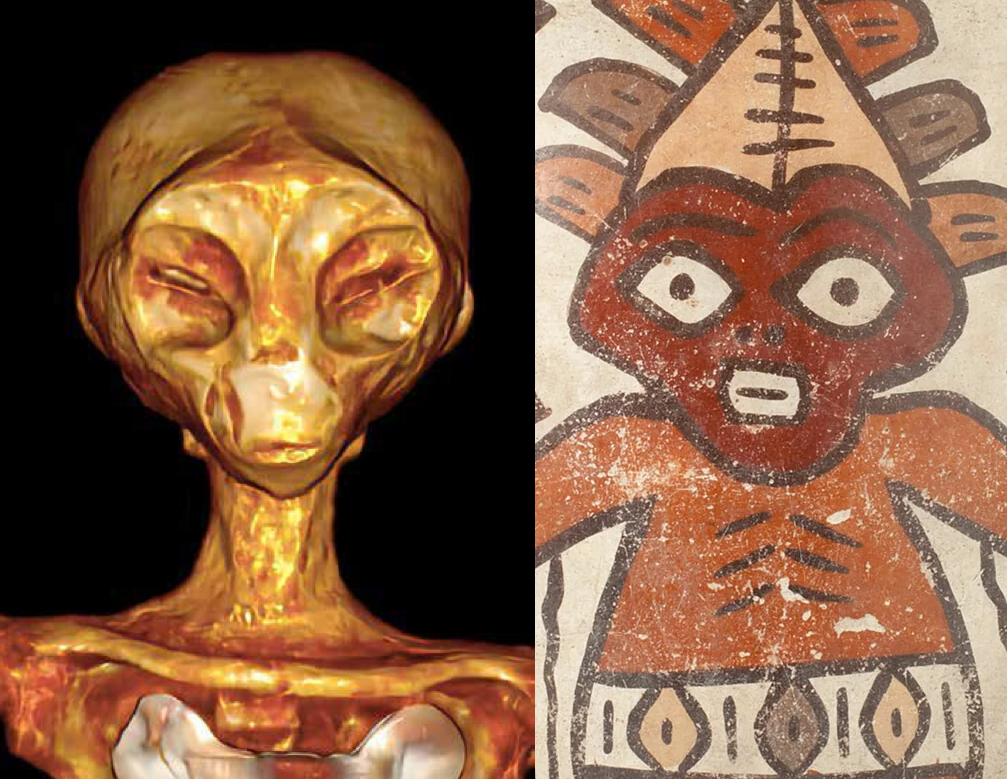
All across the world, there are depictions of small three or four-fingered creatures that look eerily like the Nazca mummies. Specifically in the Nazca region of Peru, we find quite a lot of these little figures:
Archaeologists call them “Harvester” motifs, and they are one of the most common anthropomorphic figures in Nazca iconography. There are some interesting themes in how these are often depicted:
- They have three fingers (plus a thumb sometimes) and three toes
- They have large, heart-shaped heads
- They often look emaciated with lines drawn on their face and ribs
- They have no ears and no nose
- They have child-like proportions, a large head-to-body ratio
- They often have snake-like eyes with vertical lines for pupils
- They're often depicted with trophy heads
This sounds a bit like the Nazca mummies, doesn't it? They're called Harvesters because they're often seen with crops or plants growing around them or from their bodies. While they do look humanoid, anthropologists suggest the Harvesters are supernatural beings [2]:
Carmichael (1994) argues that the pendant, “rolled-back” eyes of the Harvester and the emaciated body with protruding ribs suggest that the Harvester is a corpse, from which spring life-giving plants, much as some Nasca trophy heads are depicted with plants sprouting from their mouths. I agree with Carmichael that a relationship exists between trophy head rituals and agricultural fertility, but I am not convinced that the Harvester should be considered a corpse.
I believe that the Harvester was meant to be seen as a Mythical Being or a “Supernatural” symbolizing fertility, not as a human corpse that has been sacrificed to ensure continued fertility of the crops.
But I think one of the first anthropologists to explore the iconography captured it best when he called them “Vegetation Demons” [1]:
However, because of the occasional depictions of this being holding or carrying plants, Seler also refers to it as a Vegetation Demon, one of the “Bringers of Foodstuffs”
Is the artwork of ancient Nazca showing us how their people learned agriculture from the Harvesters? They aren't always seen with plants and crops though, sometimes they're depicted with ambiguous objects or “staffs”:
Unfortunately, there isn't much more information about who these beings were, I couldn't find any records about them from the Nazca people themselves.
But I might have a clue for where to look next based on the most common characteristic of the Harvester motif: the conical hats. These are especially odd, and suggest that the Harvesters are not humans, because no such hat has ever been found in Peru [2]:
Conical hats on Harvesters, in contrast, appear to be made of stiffer materials, perhaps animal skins. This is just speculation, however, because preserved examples of either type of headgear have not been found.
However, the hats look much like depictions of elves or dwarves in European folklore. In fact, sometimes the hats look just like a typical court jester hat:
This is a pretty specific symbol to find in two cultures across the world from each other. Keep in mind that this Peruvian artwork dates back to 500 - 100 BC, and their people had no contact with Europeans until the 15th century, two thousand years later.
If you look back on my collection of tridactyl artifacts across the world, you can see that this isn't an isolated theme either. There is a lot of tridactyl art with elf or jester-like symbols, and we might be able to use this pattern to find other cultures with stories about these same beings.
Sources
- More than Meets the Eye: A Study of Two Nasca Motifs - Ana Nieves, 2009
- A Sourcebook of Nasca Ceramic Iconography - Donald A. Proulx, 2006
- Ancient Peruvian Ceramics - The Nathan Cummings Collection - Alan R. Sawyer, 1966
© 2024 strange universe
